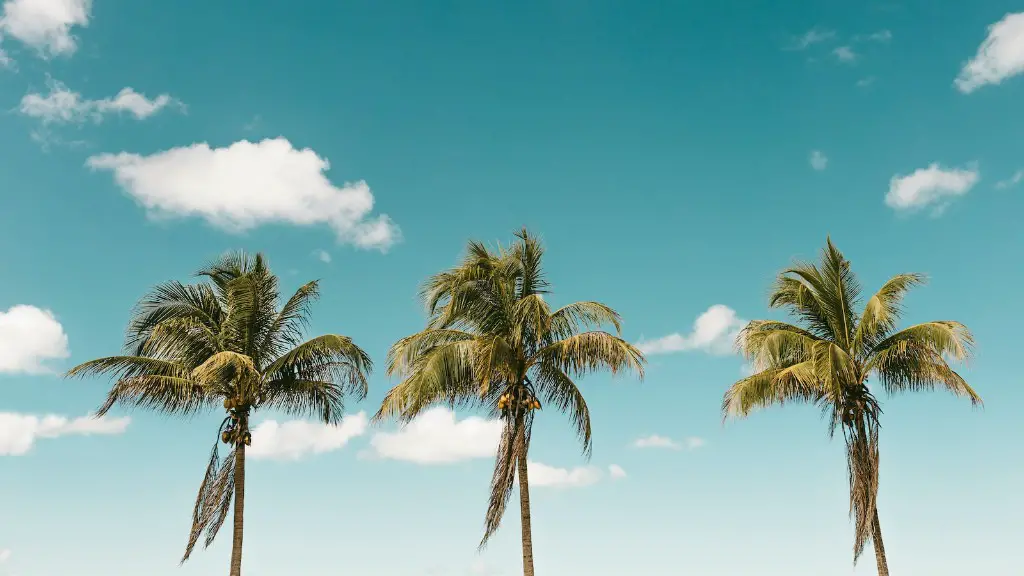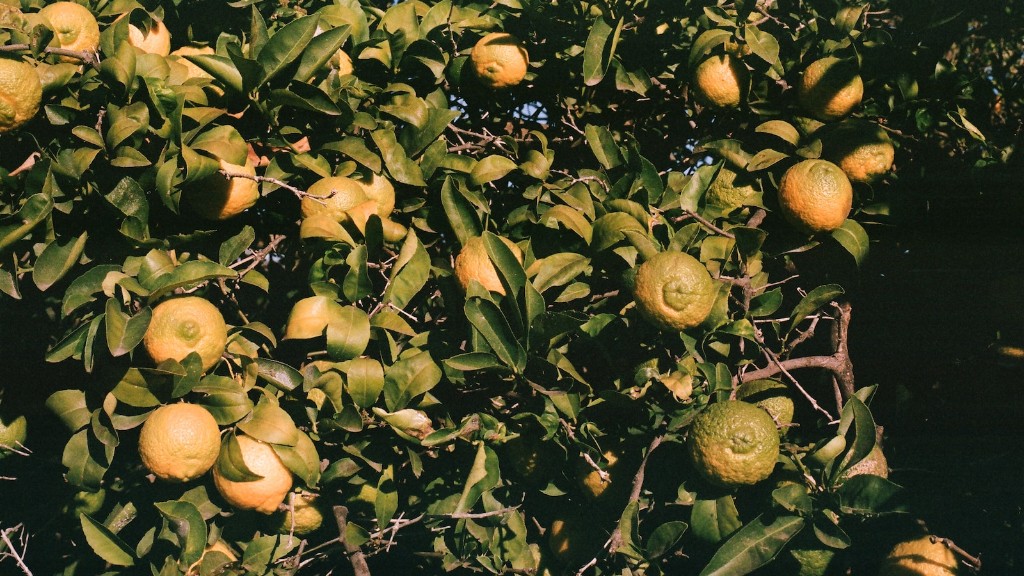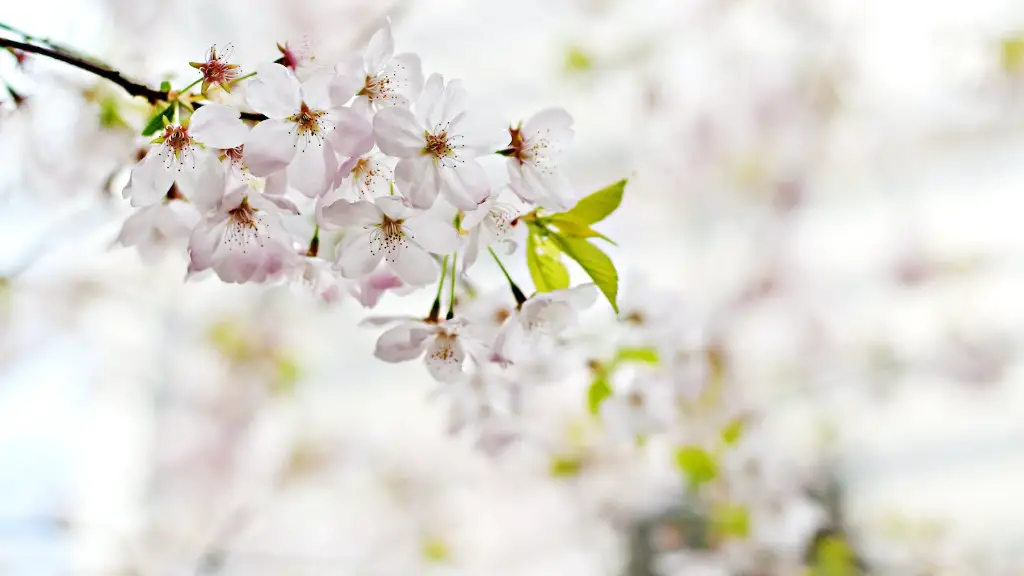Palm tree leaves turn yellow for a variety of reasons. Nutritional deficiencies, over-watering, and pests are just a few things that can lead to yellowing leaves. If you notice your palm tree leaves turning yellow, it’s important to take action quickly to correct the problem. With proper care, your palm tree can remain healthy and green.
The most common reason for palm tree leaves to turn yellow is a lack of nutrients, but other factors can also contribute to the problem. Nutrient deficiencies are often the result of poor soil conditions or improper fertilization. Other causes of yellowing leaves include herbicide damage, pests, and disease. If you suspect that a deficiency is the cause of your palm tree’s yellow leaves, you can try fertilizing it with a palm tree fertilizer.
What to do when palm leaves turn yellow?
If your palm trees have yellow leaves, it is likely due to a lack of nutrients. You can fertilizer your palm trees with a fertilizer that contains nitrogen, potassium, and magnesium to help restore them to health.
If you remove yellow fronds from a palm tree, it could push nutritional deficiency up into the new growth, which could kill the tree. Only remove fronds that are totally brown.
Can yellow palm leaves turn green again
If you have a yellow palm leaf, unfortunately it cannot turn green again. This is because once a leaf has turned yellow, the plant has already begun to drain nutrients from it. Majesty palms will eventually drop these leaves, so it is best to remove them as soon as possible.
If the leaves on your indoor Palm Tree are turning yellow, this means that the area has low humidity, and the plant’s soil is completely dry. If possible, get a humidifier for your plant. This is the best solution and also recommended by experts.
What does an overwatered palm look like?
Overwatering your palm tree can lead to a number of problems, including drooping leaves, black spots on leaves and stems, mold on the surface of the soil, and yellowing leaves. If you see any of these signs, it’s important to cut back on watering and allow the tree to dry out.
A new palm should be watered everyday on its first week, switch to every other day the following and then settle for 3 times a week on the third. Then water as normal for established plants. For more established palms, watering should be done only 2-3 times per week, and this is only in the absence of rainfall.
Does Epsom salt help palm trees?
If your palm is suffering from a magnesium deficiency, Epsom salt can be a good supplement in addition to regular fertilizer applications. Sprinkle 2 to 3 pounds of Epsom salt under the tree’s canopy, then water.
Mature palms in the landscape should be fertilized with 8-2-12 fertilizer which is a complete, granular, palm tree fertilizer, specially formulated for palms and containing all the essential elements and manganese: a mineral that helps prevent yellowing and necrosis between the leaf veins and a reduction in leaf size.
How do I keep my palm tree green
There are a few things to keep in mind when caring for a palm plant in order to keep it healthy and looking its best. Avoid placing it in direct sunlight as this can burn the leaves and cause leaf tips to turn brown or curl. It’s also important to keep an eye out for pests which can quickly infest a palm plant and cause damage. Keep the soil moist and fertilize regularly to ensure optimal growth. every few months, give your palm plant a good pruning to remove any dead or dying leaves.
Sulphur is a key component in the formation of chlorophyll, and deficiencies can result in yellow leaves and stunted growth. It is important to keep an eye on the sulphur levels in your soil and plants to ensure they are getting enough of this essential nutrient.
What does a sick palm tree look like?
If the top center stalk of your palm tree is brown and/or shriveling, it is likely sick. Check other parts of the tree for browning or shriveling as well to confirm. If your palm tree is sick, take steps to nurse it back to health or remove it to avoid spreading disease.
Water is essential for plant growth, but too much or too little can be detrimental. Poor drainage or improper watering is the leading reason behind yellow leaves. In overly wet soil, roots can’t breathe and they suffocate. This shuts down the plant’s ability to deliver water and nutrients, causing the leaves to turn yellow. Drought can also cause leaves to turn yellow, as the plant isn’t getting the water it needs to function properly.
How do I know if my palm tree is overwatered
If you have an overwatered palm tree, there are several telltale signs to look for, including pale or droopy leaves, root rot, yellowing leaves, mold growth, and pests. To save your indoor palm tree, you’ll need to take care of the root rot, repot the tree, and use new potting soil. With a little care and attention, your palm tree should recover in no time!
If you see any of the above signs in your palm tree, it is likely dying or already dead. In some cases, the damage can be stopped and reversed, so don’t panic. However, if the tree is truly beyond help, you may need to remove it to prevent it from posing a hazard to your property or surrounding areas.
How do you rejuvenate a palm tree?
If you think your palm tree is dying, there are a few things you can do to revive it. First, check the soil. If it is waterlogged, try adding some sand to improve drainage. Secondly, fertilise the tree – but avoid cheap products, as they may not be effective. Finally, place the fertiliser well away from the roots of the tree, as too much close to the roots can damage the tree.
During the spring and summer, it is important to water your palm tree often. However, in the autumn and winter, you should water it less. If the weather is dry and hot, you should mist the foliage of your palm tree several times a day. This will help keep it cool and also help deter pests.
Final Words
The palm tree leaves turn yellow when the tree is not getting enough water. The leaves will turn yellow and then brown if the tree does not have enough water.
The palm leaves turn yellow when they are not getting enough nutrients. This could be due to a number of reasons such as the tree not being watered enough, the soil not being rich enough, or the tree not getting enough sunlight.




